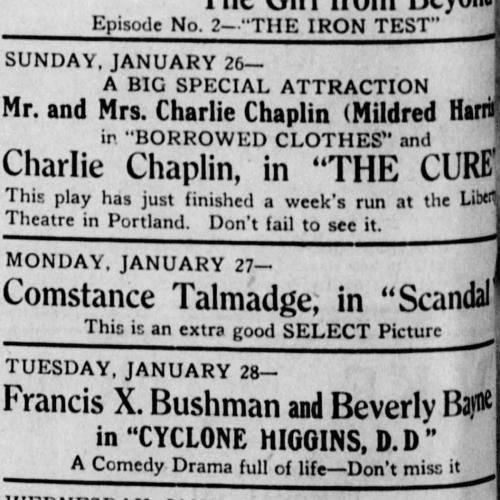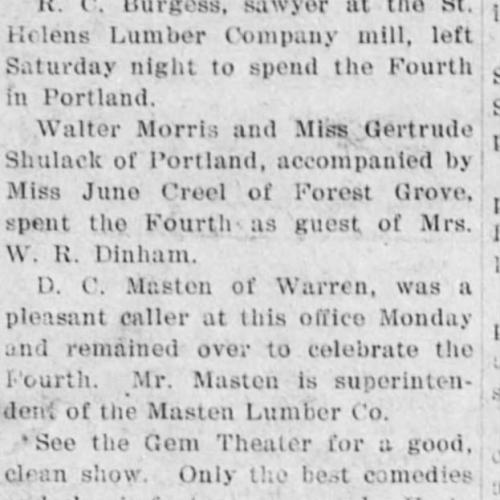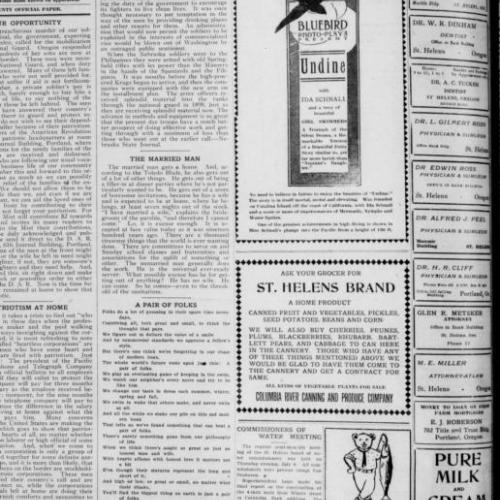The Gem Theater
The St. Helens Mist was one of the primary newspaper companies in St. Helens in the early 20th century. After scouring articles that were available through the UO library website, I was able to find many instances of documented male managers and owners of theaters in the city of St. Helens but there were no references to women managers or owners of theaters during this time period. These articles that I referenced are from 1920 which is in the Post world war I era. One of the ways that the management and owners of Gem theater promoted their theater was through newspapers. One clip from the St. Helens mist that is referenced below tells of a marketing ploy of a discovered prehistoric human skull located in the region. This is significant because a film was being made around St. Helens about the life of a mountaineer and that related to a lot of people in St. Helen's whose families had moved to Oregon through similar circumstances. A clip from the Eastern Clackamas titled Tucker’s Last story discusses the relationship between paramount pictures and theater owners in the Portland area and the types of films each theater gets access to and when they get access to these new movies. This relationship can be compared to other towns in Oregon like St. Helens with companies that control the rights to movies having a symbiotic relationship with theater owners who want to have the newest and best films shown at their respective theaters. The last clip I used from St. Helens Mist is a photo that is trying to promote an upcoming silent film that was being shown at Gem theater and the ad specifies that the film will be mortal, moral, and elevating. This shows the Christian and religious influence on the area and in the movie industry in general, the film had to be approved by the Motion Picture Production Board that oversaw censoring movies and films in order to ensure the morality of films was in line with Christian and Catholic beliefs. The promotion of a clean show in 1916, shows the gender norms and restrictions placed on the typical family living in St. Helens.


